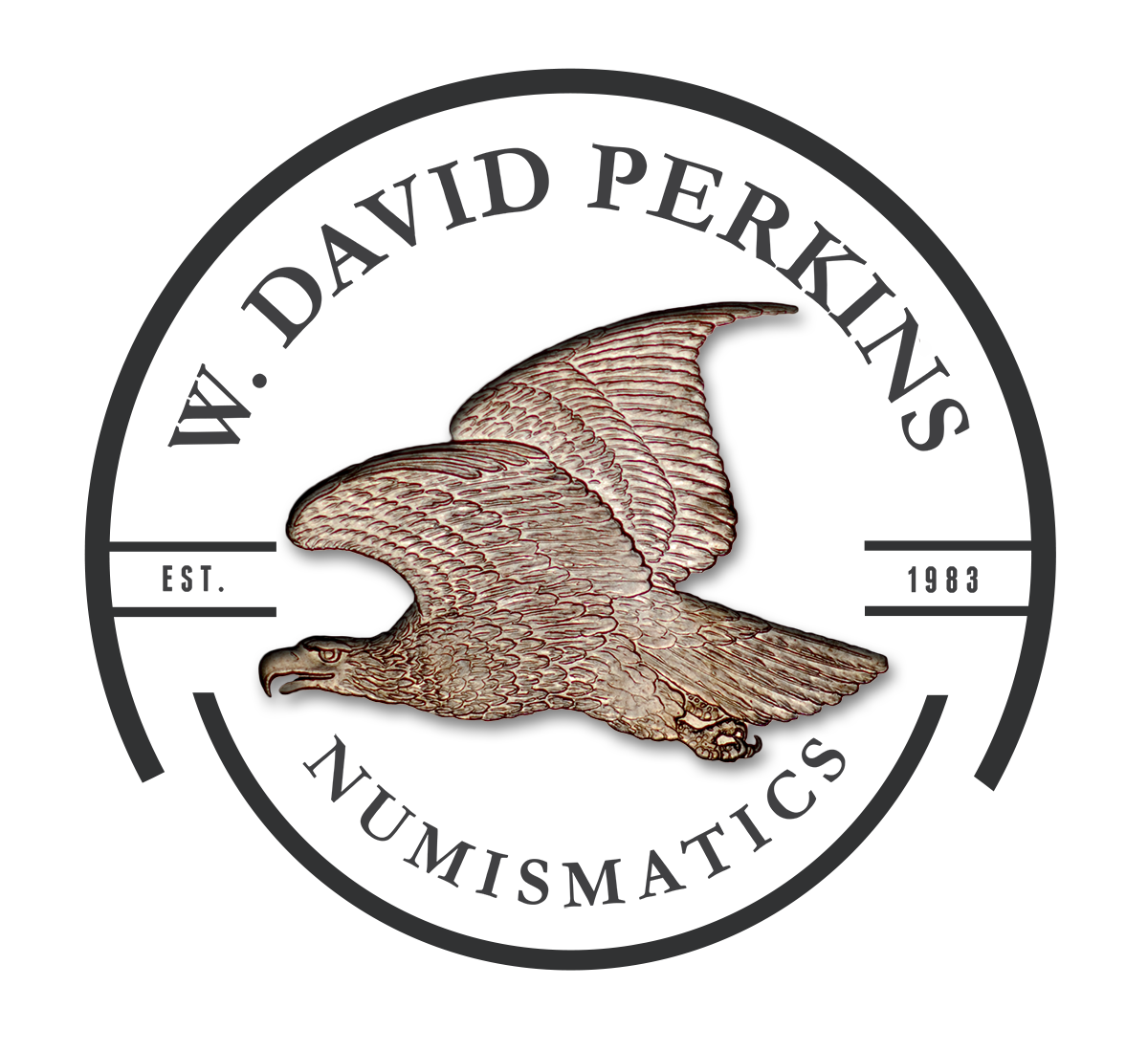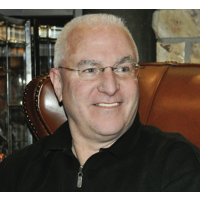The Lord St. Oswald 1795 Silver Dollars The 1964 Christie’s catalog of the Lord St. Oswald Collection contained three remarkable 1795 Silver Dollars, as follows: Lot 139 “U.S.A., DOLLAR, 1795 (Bolender no. 2) – planchet marks on both sides and some scratching in obverse field, otherwise in brilliant mint state, very rare.” Lot 139 sold for 460 British Pounds (the contemporary equivalent of $1,288) to the American firm of Stack’s, where it joined Norman Stack’s personal collection.
In 1989, Mr. Stack sold the coin through Eric Streiner. In its most recent appearance, Stack’s/Bowers sold the coin in a 2014 auction in an NGC SP64 holder. The full pedigree includes only four auction appearances since the 1964 Christie’s sale: William Strickland Collection – Charles Winn (husband of Priscilla Strickland, son-in-law and cousin of William Strickland), Rowland Winn, 1st Baron St. Oswald of Nostell – Rowland Winn, 2nd Baron St. Oswald of Nostell – Rowland George Winn, 3rd Baron St. Oswald of Nostell – Rowland Denys Guy Winn, Major the Lord St. Oswald, M.C. – Christie, Manson, and Woods 10/1964:139 (as Raw Mint State), $1,288 (460 British Pounds) – Norman Stack, sold privately through Eric Streiner in 1989 – Superior 8/1991:553 – Bob Bisanz U.S. Type Set Collection – Heritage 1/2001:7186 – Heritage 1/2007:1025 (as NGC MS64PL 1848399-003), $161,000 (no mention was made of the prior pedigree in the Heritage catalog) – Stack’s/Bowers 8/2014:13114 (as NGC SP64 3722004-018), not sold, though a post-sale press release reported a sale price of $822,500 Lot 140 “U.S.A., DOLLAR, 1795 (Bolender no. 2) – a similar coin, planchet marks on both sides, some scratching on face and in field on obverse, otherwise in mint state, very rare.” This was a duplicate of the preceding lot, but it sold for nearly double the price. This example was purchased by Mrs. Alfred Ostheimer for 900 British Pounds (the contemporary equivalent of $2,520). To our knowledge, this coin has not reappeared on the market since 1964. Lot 141 “U.S.A., DOLLAR, 1795 (Bolender no. 7) – in mint state, a rare [sic] variety than last two.” In fact, the Bolender 7, Bowers-Borckardt 18 variety is no rarer than the Bolender 2, Bowers-Borckardt 20 variety, but this was a special coin because it is the finest “Silver Plug” Dollar known (though it is doubtful if that meant anything in 1964 because the significance of the silver plugs remained undiscovered until years later). Today, we know that silver plugs were inserted into the center of underweight silver dollar and half dollar planchets to bring them up to the proper weight. This coin exhibits both the silver plug AND adjustment marks, which were scratches caused when a file was used to remove silver and bring the coin down to proper weight. The London firm of Spink & Son purchased Lot 141 for 700 British Pounds (the contemporary equivalent of $1,960). In its most recent appearance, this coin sold as part of the D. Brent Pogue Collection in September 2015 as a PCGS MS65+. The full pedigree includes a stint in the fabulous collection of type coins built by former Congressman “Jimmy” Hayes: William Strickland Collection – Charles Winn (husband of Priscilla Strickland, son-in-law and cousin of William Strickland), Rowland Winn, 1st Baron St. Oswald of Nostell – Rowland Winn, 2nd Baron St. Oswald of Nostell – Rowland George Winn, 3rd Baron St. Oswald of Nostell – Rowland Denys Guy Winn, Major the Lord St. Oswald, M.C. – Christie, Manson, and Woods 10/1964:141 (as Raw Mint State), $1,960 (700 British Pounds) – Spink & Son, Ltd. – Lester Merkin 10/1973:451 – Dr. Herbert Ketterman, sold privately – James A. “Jimmy” Hayes Collection – Stack’s 4/1983:1220 – RARCOA, sold privately in 9/1987 – D. Brent Pogue Collection (as PCGS MS65+ 31529965) – Stack’s/Bowers & Sotheby’s 9/2015:2043 (as PCGS MS65+ 31529965), $705,000 Next installment – the Lord St. Oswald 1794 Half Cents. Filed Under: News Comments (2) Bruce Lorich says: December 2, 2015 at 7:30 am Ron, Your continuing article about the LSO coins has been highly informative, at least to me. I see no other comments but I hope many numismatists have been reading your piece. While grade is obviously of great importance, the stories of how coins were made, why they came to exist, and how they have come down to us currently (if known) add dimension and, indeed, character to our hobby and business. My auction cataloguing of coins over some four decades, here and in London, has focused on adding to this dimension and I believe that collectors enjoy learning why their coins are important. One detail mentioned in your article that I was unaware of was your comment about where LSO lived and where the coins were kept for so long, Wakefield in West Yorkshire. Wakefield today hosts a major coin show (or coin fair as it’s known there) in the north of England. It’s a show I always liked to attend, usually productively. I would wager that collectors in the area are unaware, as I was, that some of the greatest of all U.S. coins were in hiding in their neighborhood for so many decades! I look forward to each of your installments–they are great. W. David Perkins says: December 2, 2015 at 2:24 pm Ron, This is in reply to your posting titled, “The Lord St. Oswald Coins – Where Are They Now? – Part IV.” Through my research, I have extensive knowledge of the Ostheimers and their early dollar collection. I purchased all of the Ostheimer notes and correspondence from Jacque Ostheimer over a decade ago. Specifically, I’d like to expand on your comments re. Lot 140 in the 1964 Christie’s sale and specifically regarding the 1795 B-2 Dollar purchased by the Ostheimers. You wrote: Lot 140 “U.S.A., DOLLAR, 1795 (Bolender no. 2) – a similar coin, planchet marks on both sides, some scratching on face and in field on obverse, otherwise in mint state, very rare.” This was a duplicate of the preceding lot, but it sold for nearly double the price. This example was purchased by Mrs. Alfred Ostheimer for 900 British Pounds (the contemporary equivalent of $2,520). To our knowledge, this coin has not reappeared on the market since 1964. This 1795 Dollar was purchased by the Ostheimers at the 1964 Christie’s sale. Mrs. Ostheimer told me that she went to London herself to purchase one of the St. Oswald 1794 Dollars along with Lot 140, a 1795 B-2 Flowing Hair Dollar. Note known to many numismatists today, in June 1968 a robbery took place at the Ostheimer home in Honolulu, Hawaii. According to Coin World July 3, 1968, 115 silver dollars dated 1794-1805 were taken in this robbery. A ransom was offered, and was eventually paid. According to Coin World September 25, 1968, all of the coins were recovered except for two, noting, “Still missing are a 1795 B-2 dollar, and a “beautiful 1803 Proof strike dollar” according to Ostheimer. According to a document I acquired from Mrs. Ostheimer there was also a Gem 1795 B-1 Dollar missing, considered the finest known for the die marriage by the Ostheimers. You are most likely correct in that this coin has not reappeared on the market since 1964. I say “most likely correct” as this 1795 Dollar was not plated in the 1964 Christie’s sale catalog. Thus we may never know for sure if anyone has seen it or offered it for sale since 1968 (when it was stolen). On the other hand, the coin more than likely is “out there somewhere.” The 1795 B-1 Gem Dollar and the 1803 Proof Dollar have not been recovered to-date either. According to Mrs. Ostheimer when I interviewed her in person, “a thief stole these coins from the thieves!”

